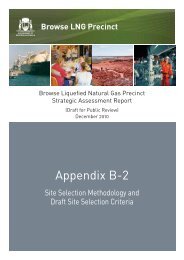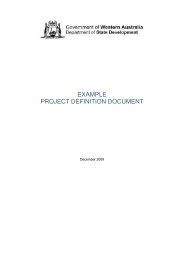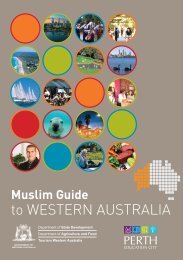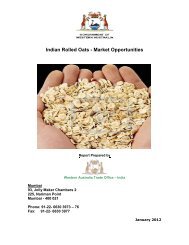Browse LNG Precinct - Public Information Booklet - Department of ...
Browse LNG Precinct - Public Information Booklet - Department of ...
Browse LNG Precinct - Public Information Booklet - Department of ...
Create successful ePaper yourself
Turn your PDF publications into a flip-book with our unique Google optimized e-Paper software.
<strong>Public</strong> <strong>Information</strong> <strong>Booklet</strong><br />
Saline water from the desalination process will be discharged into the sea at a rate and a<br />
location where it can be shown that there will be minimal impact on the marine<br />
environment/saltwater country.<br />
Questions:<br />
� Can you please provide some more information on desalination?<br />
� How does the desalination process work? How does the process affect the<br />
sea?<br />
There are two different ways desalination <strong>of</strong> salty water can be achieved in order to get<br />
fresh water. This can be either by vacuum distillation (basically boiling water and<br />
condensing the steam to make fresh water) or via reverse osmosis where water is<br />
pumped to a very high pressure and pumped through a membrane with very small holes<br />
in it that lets the fresh water pass through but not the salt.<br />
Independent <strong>of</strong> the method used to produce the fresh water there will be a waste steam<br />
<strong>of</strong> salty water (called brine) that needs to be managed. This water has nothing extra<br />
added to it so if the water was extracted from the ocean, then the brine is just sea water,<br />
but it is twice as salty. This ëextraí salty water quickly mixes with the ocean and is diluted<br />
back to normal salt levels (typically within tens <strong>of</strong> metres <strong>of</strong> the outfall location where it is<br />
put back in the ocean).<br />
If the source water used is from the Wallal deep aquifer then less brine will be produced<br />
and the brine that is produced will be less salty (even less salty than the sea). This is<br />
because the Wallal water has much less salt in it (only one tenth <strong>of</strong> the salt that the ocean<br />
has). As a result, the brine from treatment <strong>of</strong> the Wallal is much easier than the<br />
management <strong>of</strong> the brine from sea water. If a fresh water source is used (e.g. shallow<br />
ground water) then there would be almost no brine to manage at all.<br />
5.7. General Issues<br />
Construction Materials Requirements<br />
Question - What construction materials/rock is required for foundations and other<br />
construction/<strong>Precinct</strong> needs and where will it be sourced from?<br />
The range <strong>of</strong> potential construction materials required for the civil and marine<br />
components <strong>of</strong> the project includes: rock for sub-sea pipeline stabilisation/protection<br />
works, armour and core for breakwater development, concrete aggregate for marine and<br />
plant structures, bulk fill materials for onshore earthworks, potable water resources and<br />
pavement materials for road construction.<br />
It is recognised that on the Dampier Peninsula, the availability <strong>of</strong> suitable materials for<br />
these purposes is likely to be limited and will require evaluation and negotiation with<br />
Traditional Owners and authorities. Although still to be assessed, possible locations in<br />
the Kimberley to source construction materials may include Nillibubbacca quarry and<br />
Cockatoo and/or Koolan Islands.<br />
5279225 76









